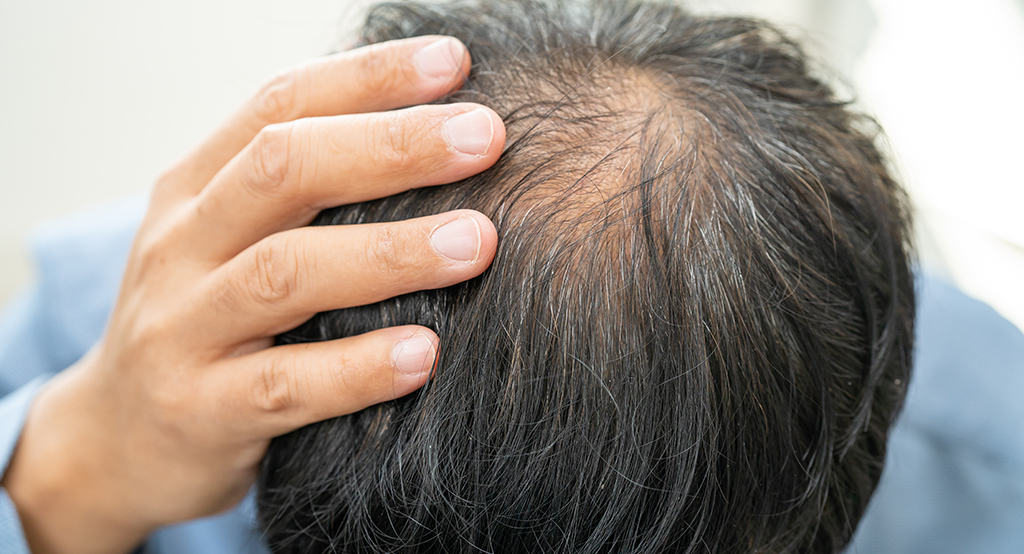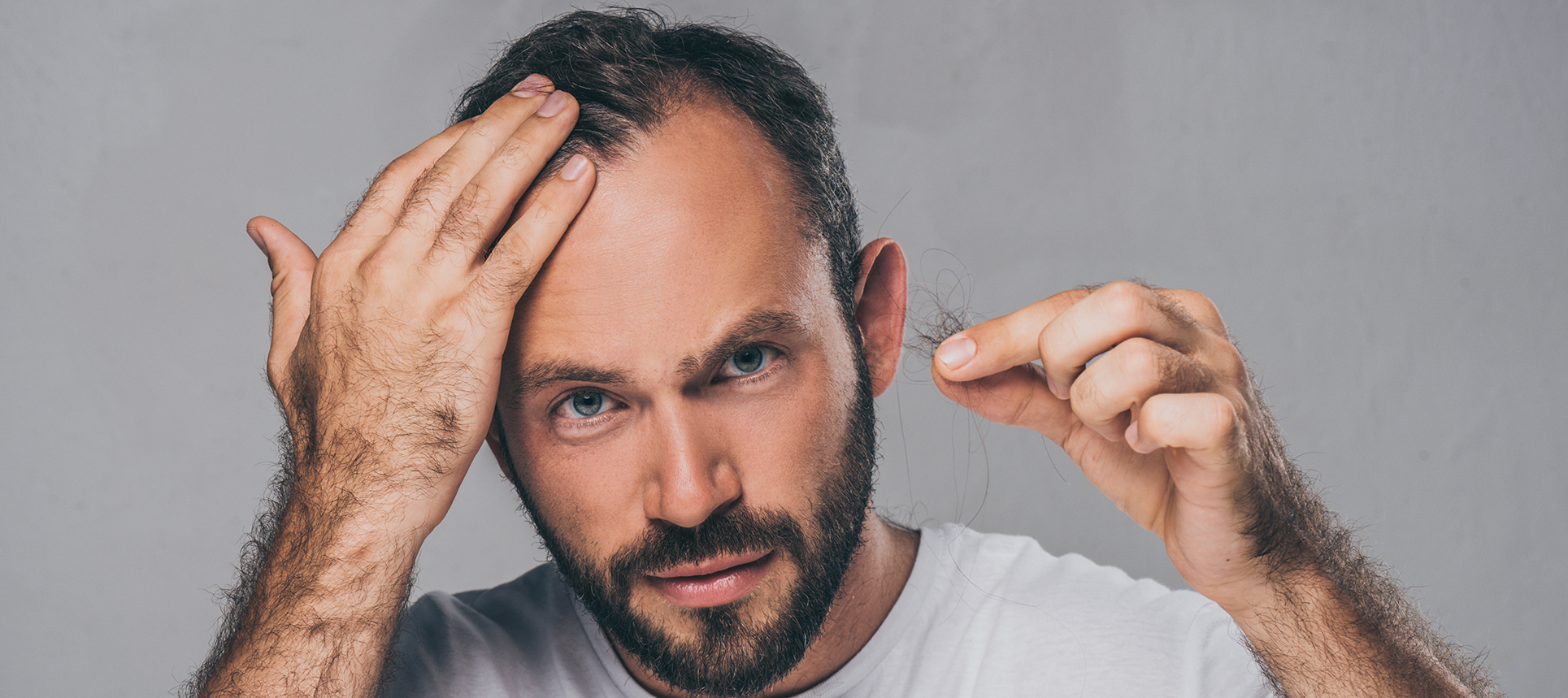If you’ve been living with alopecia, you’ve probably noticed how fast the treatment landscape is changing. Every year, researchers push the boundaries of what’s possible, and 2026 is shaping up to be one of the most exciting years yet. New medications, updated versions of existing therapies, and advanced regenerative technologies are making real hair regrowth more achievable for more people.
You no longer have to rely solely on corticosteroids, minoxidil, or the same old treatment paths that haven’t changed in decades. Today, there are cutting-edge options that target the immune system, stimulate dormant follicles, and even rebuild damaged hair structures. What’s even better is that many of these innovations are becoming safer, more targeted, and suitable for a wider range of patients.
In this article, I’ll walk you through the latest and most promising alopecia treatments expected in 2026 covering how they work, who they benefit, their effectiveness, and what you can realistically expect. Whether you’re dealing with alopecia areata, androgenetic hair loss, traction alopecia, or scarring alopecias, you’ll find helpful insights that can guide your next steps.
Understanding Why New Treatments Are Emerging So Quickly
The rise in new alopecia therapies isn’t random it’s been driven by major breakthroughs in medicine.
There are three reasons you’re seeing so many new options:
1. Better immune system understanding. Researchers now know exactly which immune pathways trigger alopecia areata.
2. Growth in regenerative medicine. Hair follicles are being reawakened through stem cells, exosomes, and tissue engineering.
3. Advanced drug targeting. Scientists can design medication that locks onto the right pathway without affecting the rest of your body.
This means treatments are becoming safer, more precise, and more effective than ever before.
The Most Promising Alopecia Treatments Expected in 2026

Below is a detailed look at what’s new, what looks most effective, and which treatment may fit your situation.
1. Updated JAK Inhibitors: The Next Generation (2026 Edition)
JAK inhibitors changed the alopecia world when they first appeared, but 2026 brings next-generation versions that are more targeted and come with fewer side effects.
What’s new in 2026?
You can expect:
- More selective targeting of the JAK1/JAK3 pathway
- Lower systemic exposure meaning fewer body-wide effects
- Higher response rates, especially for moderate to severe alopecia areata
- Reduced relapse risk after stopping medication
Three emerging medications to watch:
a) Selective Topical JAK Creams (New Formulations)
These creams deliver JAK inhibition directly to the scalp without entering the bloodstream.
Benefits include:
- Lower infection risk
- High absorption into follicles
- Suitable for children and teens
- Much safer for long-term use
b) Micro-dose Oral JAKs
These use ultra-low doses to maintain hair growth without large systemic effects. This option is ideal if you’ve responded to JAKs in the past but struggled with safety concerns.
c) JAK + Anti-Inflammatory Blends
Some 2026 clinical trials focus on pairing JAK inhibitors with natural anti-inflammatories to reduce scalp irritation, improve regrowth, and increase tolerability.
Who benefits most?
- People with alopecia areata (mild to severe)
- Patients who relapsed after standard JAK therapy
- Individuals needing safer long-term treatment
2. Exosome Therapy 2.0 (Regenerative and More Potent)
Exosome therapy isn’t new, but the 2026 version is significantly more refined. Exosomes are tiny particles released by stem cells, carrying growth factors and signalling molecules that help hair follicles repair themselves.
What’s new in 2026?
- Higher purity levels
- More potent follicle-stimulating factors
- Better consistency across treatments
- New evidence for reversing miniaturisation
In earlier years, exosomes had mixed results because quality varied dramatically. But in 2026, regulated laboratory-grown exosomes offer significantly improved performance.
Benefits you can expect
- Faster regrowth
- Smoother scalp texture
- More hairs switching from “resting” to “growth” phase
- Thickening of fine, miniaturised strands
Best for which type of alopecia?
- Androgenetic alopecia (men and women)
- Early to moderate thinning
- Stress-related hair loss
- Post-pregnancy shedding
- Age-related follicle weakening
3. Stem Cell-Derived Follicle Boosters (Emerging in 2026)
This is one of the most exciting developments in modern hair science.
How it works
Specialised stem cells are grown in a lab and reprogrammed to send follicle-activating signals when injected into the scalp. These don’t turn into hair themselves they “wake up” the follicles you already have.
2026 enhancements include:
- More stable stem-cell lines
- Better survival rates after injection
- Longer-lasting follicle activation
- Stronger anti-inflammatory effects
Results so far look extremely promising
Many trials show:
- 25–40% improvement in density
- Stronger, thicker hair shafts
- Faster regrowth after shedding episodes
Best candidates
- People who don’t want medication
- Individuals with early to moderate follicle miniaturisation
- Patients with sensitive scalps
This treatment is considered one of the safest emerging options.
4. Cell-Based Follicle Regeneration (Near-Future Breakthrough)
Researchers have been working towards growing hair follicles in the lab for years. In 2026, small-scale clinical trials are expected to roll out for the first generation of lab-grown follicle cell injections.
How this new method works
Cells from a healthy hair follicle are multiplied in a lab and re-implanted into thinning areas. These cells encourage new follicle formation and strengthen existing structures.
Why it matters
You may soon have the option to regenerate damaged follicles not just stimulate them.
Early trial findings suggest
- Encouraging regrowth in scarring alopecia
- Improved density after significant follicle loss
- Long-lasting structural improvements
Who may benefit most?

- Those with long-standing thinning
- Individuals with scarring alopecias
- People who want an alternative to transplant surgery
This is one of the most closely watched developments in dermatology.
5. Hair Cloning and Tissue Engineering: The Future Gets Closer
By 2026, hair cloning won’t yet be fully available, but several labs have reached major milestones.
What’s happening now?
- Lab-grown follicles are surviving longer
- Tissue-engineered “follicle patches” are being tested in animals
- 3D-printed follicle scaffolds are under development
What this technology aims to deliver
- Unlimited supply of new follicles
- No need to rely on donor hair
- Permanent solutions for severe alopecia
While not yet ready for clinical use, 2026 is the year this treatment becomes a realistic future option rather than distant science fiction.
6. Enhanced PRP (Platelet-Rich Plasma) 2026 Formulation
PRP has been popular for years, but the 2026 version includes:
- Higher platelet concentrations
- More growth factors
- Longer activation periods
- Better follicle penetration
- Less discomfort during injections
Many clinics now combine PRP with micro-needling or light therapy to boost results.
Why PRP is still relevant
- It strengthens weak follicles
- It’s natural and uses your own blood
- It reduces shedding
- It thickens thinning strands
Who it helps most
- Androgenetic alopecia
- Telogen effluvium
- Stress-related thinning
PRP is also one of the safest long-term treatments.
7. Low-Level Laser Therapy (LLLT) with AI Tracking
In 2026, LLLT devices use AI to monitor:
- Your shedding cycles
- Scalp temperature
- Follicle activity
- Treatment frequency
This means devices can adjust their settings in real time, offering more personalised and effective results.
Benefits include
- Reduced shedding
- Improved density
- Stronger hair roots
- Enhanced absorption of topical treatments
It’s ideal for home use and long-term maintenance.
8. Combination Therapies: The Gold Standard of 2026
The most successful alopecia results often come from combining treatments.
Typical combinations include:
- JAK inhibitors + PRP
- Exosomes + micro-needling
- Stem cells + LLLT
- Topical minoxidil + oral low-dose medications
- Exosomes + JAK creams
- PRP + peptides
Combination therapy is particularly effective because hair follicles respond to multiple types of stimulation.
Which Treatment Is Best for Your Type of Alopecia?
Here’s a breakdown to help you understand your options.
Alopecia Areata (Patchy or Total)
Best 2026 treatments:
- Next-generation JAK inhibitors
- Selective topical JAK creams
- Cell-based immune therapies
- Exosome therapy for regrowth
If you’ve struggled with relapses, the newer JAKs are particularly promising.
Male & Female Pattern Baldness (Androgenetic Alopecia)
Best 2026 treatments:
- Exosomes 2.0
- Enhanced PRP formulations
- Stem-cell follicle boosters
- LLLT with AI
Genetic thinning responds extremely well to regenerative therapies.
Traction Alopecia
Best 2026 treatments:
- Stem-cell follicle activators
- PRP
- Exosomes
Early traction alopecia often responds well because follicles aren’t fully destroyed.
Scarring Alopecia
Best 2026 treatments:
- Cell-based follicle regeneration
- Immune-modulating therapies
- Regenerative exosomes
This type is more challenging, but emerging technology offers new hope.
Safety and Side Effects: What You Need to Know
The good news is that 2026 treatments are safer than older therapies, but every option still has considerations.
Possible side effects include
- Mild scalp redness
- Temporary shedding
- Itching
- Injection discomfort
- Sensitivity during early stages
JAK inhibitors may require monitoring, but the newer versions have significantly improved safety profiles.
FAQs:
1. Are the new 2026 alopecia treatments safer than older options?
Yes, the treatments emerging in 2026 are significantly safer compared to older options such as high-dose oral steroids or early-generation immunosuppressants. The latest therapies specifically target the immune pathways responsible for alopecia without affecting the rest of the body. For example, next-generation JAK inhibitors are designed to focus mainly on JAK1 and JAK3, which reduces unwanted systemic effects. Similarly, new regenerative treatments like exosomes and stem-cell follicle boosters rely on naturally occurring biological signalling rather than harsh chemicals. Even procedures like PRP and LLLT now come with improved precision, making them more predictable and comfortable. Overall, patients can expect gentler therapies with fewer long-term risks.
2. Can these new treatments fully reverse alopecia?
The extent of regrowth depends on the type of alopecia you have. In cases such as alopecia areata or androgenetic alopecia, the 2026 treatments have shown strong potential to significantly improve density, reduce shedding, and revive dormant follicles. Stem-cell boosters, exosome therapy, and updated JAK inhibitors, in particular, show encouraging results. However, for conditions involving permanent follicle destruction, like advanced scarring alopecia, complete reversal is still not guaranteed. That said, early clinical trials on cell-based regeneration show promise in rebuilding damaged follicles, something that was not previously possible. So while full reversal isn’t guaranteed for everyone, the chances of meaningful regrowth are higher than ever.
3. How long does it take to see results with the 2026 therapies?
Most patients begin noticing early improvements within eight to twelve weeks, although this varies depending on the treatment. JAK inhibitors often show the quickest response because they directly calm the immune attack that causes sudden hair loss. Regenerative therapies such as exosomes and stem-cell injections generally take a little longer, as the follicle repair process is more gradual. Enhanced PRP formulations may show a reduction in shedding within a month, with visible thickening occurring over three to six months. The key is consistency, as modern treatments are designed to gradually restore follicle function rather than force rapid but unsustainable growth.
4. Are these treatments suitable for all types of alopecia?
Most of the new 2026 therapies can be tailored to different forms of alopecia, but suitability depends on the underlying cause of hair loss. For example, next-generation JAK inhibitors work best for alopecia areata because this condition is driven by an autoimmune reaction. Regenerative approaches such as exosomes or stem-cell follicle boosters are ideal for androgenetic alopecia, stress-related thinning, and early traction alopecia, where follicles are still present but weakened. Cell-based regeneration may benefit those with scarring alopecia, where follicles have been damaged or lost. A dermatologist will usually evaluate your scalp condition, hair density, medical history, and progression before recommending the right approach.
5. Do the newer treatments replace the need for hair transplants?
Not completely, but they significantly reduce the number of people who may feel the need for surgery. Many patients who previously considered hair transplants are now able to achieve noticeable improvements through advanced regenerative therapies like exosomes, stem-cell boosters, or enhanced PRP. These treatments strengthen existing follicles and can create the appearance of fuller growth without surgery. However, in cases where large areas of the scalp have no active follicles left, a transplant may still be the most effective option. Future technologies like cell-based regeneration and early-stage hair cloning may eventually eliminate the need for traditional transplant surgery altogether, but this is still in development.
6. What makes the 2026 exosome therapy different from earlier versions?
The 2026 version of exosome therapy is far more advanced because it uses highly purified, lab-grown exosomes rather than inconsistent natural extracts. Earlier exosome products varied widely in quality, leading to unpredictable results. The new generation is manufactured under controlled conditions, ensuring that every treatment contains the same high concentration of follicle-activating growth factors. This consistency leads to faster improvements, better follicle communication, and more reliable outcomes. Many patients now experience quicker thickening of fine strands, stronger regrowth cycles, and better recovery from shedding episodes thanks to these enhanced formulations.
7. Will the new JAK inhibitors still require medical monitoring?
Yes, but the monitoring is much lighter than before. Traditional oral JAK inhibitors required regular blood tests because they affected the immune system throughout the body. The 2026 formulations, however, use more selective pathways and often rely on topical or micro-dose delivery. This reduces the risk of widespread immune suppression. Patients using the new topical JAK creams, for example, typically require minimal monitoring because the medication remains concentrated in the scalp rather than the bloodstream. Micro-dose oral options still require occasional check-ins, but the overall safety profile has improved dramatically.
8. Are regenerative treatments like stem cells and exosomes painful?
Most patients report very mild discomfort rather than significant pain. The injections used for stem-cell boosters or exosome therapy are performed with fine needles and usually take only a few minutes. New techniques also use cooling devices, anaesthetic sprays, or vibration tools to make the process even more comfortable. Enhanced PRP treatments, which previously caused some soreness due to multiple injections, are now smoother thanks to improved platelet activation and gentler delivery methods. Even microneedling-assisted procedures have become more tolerable as devices evolve. Overall, discomfort is minimal and temporary.
9. Can these treatments stop future hair loss or only regrow existing hair?
Many of the newest therapies do both. Next-generation JAK inhibitors calm autoimmune activity, which prevents sudden hair-fall episodes while promoting new growth. Exosome therapy not only stimulates the follicles but also reduces inflammation and improves scalp health, which helps maintain long-term results. Stem-cell boosters strengthen the follicle environment so hair remains in the growth phase longer. LLLT devices equipped with AI adjust treatment frequency based on your shedding cycles, preventing future thinning. By improving the overall follicle environment, these treatments help slow or even halt progression rather than simply repairing existing damage.
10. How do I know which 2026 alopecia treatment is right for me?
The best treatment depends on your specific diagnosis, your stage of hair loss, your medical history, and your long-term goals. For sudden patchy loss, dermatologists often recommend next-generation JAK inhibitors. For early genetic thinning, exosomes or stem-cell boosters are commonly chosen because they strengthen the miniaturising follicles. If you’re dealing with chronic shedding or stress-related hair fall, enhanced PRP may be the simplest and most natural solution. People with scarring alopecia or severe long-term thinning may benefit from cell-based regeneration trials as they become available. A personalised consultation is essential, as modern therapies are highly targeted.
Final Thoughts: A New Era of Possibilities for Hair Regrowth
Alopecia treatment has evolved more in the last few years than in the previous several decades, and 2026 marks a major turning point. With safer medications, smarter regenerative therapies, and groundbreaking cell-based innovations, patients now have access to solutions that are more personalised, effective, and long-lasting than ever before.
Whether you’re dealing with sudden patchy loss, genetic thinning, or long-standing follicle damage, the key is choosing a treatment that matches your specific condition. The best results always come from a tailored approach one that considers your scalp health, medical history, and long-term goals rather than relying on a single one-size-fits-all option.
If you’re ready to explore your options further, you can get in touch with us at the London Dermatology Centre to book a consultation and discuss the most suitable Alopecia treatment in London for your needs. Our team is here to guide you through the latest advancements and help you find the approach that gives you the best chance at long-term regrowth and restored confidence.
References:
1. Poddar, N., Aratikatla, A. & Gupta, A. (2025) ‘Therapeutic potential of stem cell-derived exosomes in hair regeneration: A systematic review’, World Journal of Stem Cells, https://pmc.ncbi.nlm.nih.gov/articles/PMC12305264/
2. Al Ameer, M., et al. (2025) ‘From Cells to Strands: A Systematic Review Comparing Exosome Therapy, Platelet-Rich Plasma, and Minoxidil for Androgenetic Alopecia Treatment’, Frontiers in Medicine. https://pmc.ncbi.nlm.nih.gov/articles/PMC12351504/
3. Rajendran, R.L., Ahn, B.-C. & Gangadaran, P. (2025) ‘Potential of mesenchymal stem cell-derived exosomes in the treatment of androgenetic alopecia’, World Journal of Stem Cells, https://pubmed.ncbi.nlm.nih.gov/40503362/
4. Gupta, A., Poddar, N. & Aratikatla, A. (2022) ‘Exosome therapy in hair regeneration: A literature review of the evidence, challenges, and future opportunities’, Journal of Cosmetic Dermatology https://pubmed.ncbi.nlm.nih.gov/35441799/ 5. Mehta, A. & Bhatia, S. (2025) ‘Revolutionary Approaches to Hair Regrowth’, Cells, https://www.mdpi.com/2073-4409/14/11/779
